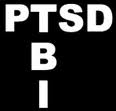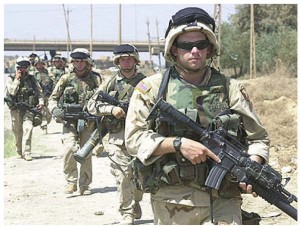Feb
11

by Janet J. Seahorn
This week is the week of the Heart. Yep, lots of hearts in the multiple shapes and shades of Valentine cards. This is the week — some focus only on one day — to call forth the power of Love. Sounds, corny, but it is true. Love heals.
One only needs to watch a small child with a skinned knee crying for comfort. Mom enfolds the tiny tot in her arms, puts a band aid on the boo boo, kisses it gently, and soothingly says to her child, “See all better”. And the child believes. Wow! If the emotional counselors are correct, what we focus on we get. Perhaps we should try to focus on Love, even for a day. Test the statement, “Love Heals”.
Love Heals acts of war…
Guns, bombs, and torture certainly don’t.
Love Heals violent acts of countless forms.
I may never forget a terrible act, but maybe I can get to a bit of forgiveness.
Love Heals our physical and emotional pain.
Ask a pet owner of the power of his precious companion.
Love heals our fears.
“Worry is simply the habit of focusing on what we don’t want.” (January 22, 2010, Daily Word)
Through the strength of the Heart, Love Heals. And like that small child, I choose to believe.
Jan
28
Tears of the Children
Filed Under Trauma | Comments Off on Tears of the Children

by Janet J. Seahorn
Normally our blog focuses on the effects of combat trauma to military personnel, their families, friends, and communities. Today is moving to the broader devastation of trauma. Trauma not caused by war and hate, but by nature. Trauma, that even with the greatest technological advances of man, cannot be halted or many times even predicted beforehand. Such is the current state of Haiti.
For me the effects of war trauma on children may be even worse, because it is not due to outside forces of nature, but hate, greed, or lack of compassion for others. Hate which is colored by the darkness of men’s hearts and even nation’s souls. Unlike nature, the torture and killings go on for years, with little hope of relief.
In Haiti, however, what we continue to see are a people doing what they can to help their neighbors and communities. Yes, there is looting and even violence. Desperate people act in desperate ways when one’s life, and the lives of one’s families are at stake. Fighting for the every day things most of us take for granted: water, food, a safe place to sleep, medical care… and the list grows.
When looking at the photos of children, I can’t help but wonder what are they able to understand about this terrible event? How can they make sense of horror? In a country where hundreds of thousands of children were abandoned before the earthquake, who will take care of these babies and children now? Who will hold and comfort them? Who will help to explain the experience and give them the physical and emotional support to heal?
What we currently know about childhood trauma is that it can be more difficult to heal. The brain has not connected the higher order neural networks that help adults sort out the facts of any event. Adults have far more coping skills. Children, have far fewer in their young minds. They have not lived long enough or had enough experiences to compare or sort out the hues of trauma. Their world is very concrete – what one sees is what one understands at a very concrete level.
We used to believe if a terrible act happened early in life, the person could more easily mend. Current neuroscience has proven this belief is a highly inaccurate myth. The earlier the trauma on a young brain, the worse the effects can be if the child is not given the physical and emotionally support needed for healing. Healing that will allowed the child to grow in a world where he/she can still feel safe. Healing that offers hope and resilience from future traumas because they were loved, comforted, and supported when they so desperately need these acts of security.
Therefore, keep all of our children in your hearts and prayers, whether they are in Haiti, Afghanistan, or your own neighborhood. Pray for the mending of our children’s bodies, minds, and hearts. They are the world’s future. We must do all that is necessary to try to ensure that their future is built on a foundation of compassion, kindness, and humanity.
Jan
19
The Nightmare Revisited
Filed Under Life, Peace, Today's War, Trauma, War | Comments Off on The Nightmare Revisited

By Janet J. Seahorn
Last year at this time, Tony and I were in Vietnam and Cambodia. It was a humbling, yet inspiring excursion. As Tony stated many times, he did not go there to heal or recreate the war. He wanted to visit, only to see how things had changed, with hopes that the people and the country were mending.
By all outward appearances hope seemed to be occurring. Yet, what keep coming back to me, were the faces of the old women. We did not see the same number of older men, perhaps because many of this age were killed in the war. The women’s faces were not happy. Their features lined with rivers of anger. It was the eyes that held the emotions, and for many, their emotions were tortuous and hate-filled. What haunts me now are the faces I glimpse in the newspapers of civilians in Iraq and Afghanistan; similar looks living in human bodies experiencing similar horrors of war.
As we continue to read of the escalation of suicides of returning military men and women, I wonder if such unforgettable faces are haunting them. Faces of the enemy, faces of their comrades, faces of the children? In the first few blogs of this New Year, I wrote of Peace. Can it be attained in a person’s mind and heart after experiencing so much? I very much want to believe such a peace is possible. For others, the hideous experiences continue to dig deeper ravines into the soul. To heal, even a bit, these gorges must be filled in gradually.
Perhaps not fully, but even building up the crevasses a little keeps one from falling into the yawning depths of depression, anxiety, and hopelessness. As long as one can look up and see the sky, hope is present. It is when one’s existence is swallowed in darkness that even the tiniest light is diminished. Finding ways to keep the sunlight accessible for our returning vets will be the work of everyone: the nation, its people, families, friends, communities, and most importantly, the veteran.
We have troops leaving daily for the war zone, and others returning. A 2008 Rand Corporation study revealed that 300,000 troops who served in Iraq and Afghanistan had Post-Traumatic Stress, while 320,000 reported probable traumatic brain injuries. Both conditions greatly increase the likelihood of attempted suicide. “According to a Congressional Quarterly compilation in late November 2009, 334 active-duty military service men and women have taken their own lives in 2009” (Edward Pages, 2009: The Year of Soldier’s Suicide), and this does not include those military individuals who have been discharged.
Let us all be sure to look into these eyes of freedom and not dismiss the signs of their sacrifice. Peace and healing is everyone’s work; everyone’s answerability. As a nation, it must be our core mission to mend and heal all those that fought in lands where few of us ever think to venture.
I doubt if many of our returning military personnel have rational thoughts of wanting to return to the combat zone. It took almost forty years for us to do so.
One of our favorite veterans, Michael MacDonald, wrote us the other day relating his response to those who frequently ask him if he ever wants to return to Vietnam for a visit. His reply, “Why, I was just there last night.”
And, for many, this statement is all too true. It is those nights without returning that we pray for in our sleep and dreams. It is those nights without revisiting the nightmares that keep us healing.
Jan
12
Another Perspective on War
Filed Under PTSD, Today's War, Trauma | 1 Comment
by Janet J. Seahorn
It is a snowy Sunday afternoon. I have been running errands, not because I have a great deal to do after the holidays; to be honest, I am merely trying to keep from thinking about the escalation of the war in Afghanistan. When I got home, Tony had posted a new message on our blog that began with “I seem to spend a lot of time thinking about war, even when I don’t want to. The reality of war. The horror of war…” With this blog he added an article from our local newspaper, The Denver Post. It was another reality check from troops actually involved in war, versus media or political rhetoric.
Every day we get emails, phone calls, or an acquaintance sharing a tragic story about a loved one, friend, or just someone they distantly know who is struggling with Post-Traumatic Stress. For those who have and are serving in the current conflict, the stories are so similar to Vietnam veterans it is down right eerie.
For some individuals the nightmares begin immediately. Others seem OK for the first six months or even a year, and then it begins, the panic attacks, unresolved anger, anxiety, and night terrors. The narratives, however, seem to remain the same. The vet initially attributes the emotions to some external force. He/she claims the feelings aren’t real. Given time, everything will be just fine.
Denial is an interesting strategy and may work for a short time, but sooner or later friends and family members will begin to feel the impact of the warrior’s pain. Owning the trauma is the first step to managing it.
I can’t begin to count how many people who have never served in the military, have never had to sacrifice their physical and emotional lives, have never lived with a parent or sibling who is carrying the war’s trauma in every cell of his body says something like, “there is a silver lining in these wars”, “if we don’t fight them there, we will have to fight them here on American soil”.
It isn’t that these individuals are unkind or uncaring; they merely have not had the experience of combat that comes with a very high personal price tag. The ultimate “Golden Globe of Thoughtlessness”, however, are those who doubt that PTSD even exists, and that if it does, it can be easily treated or overcome with just a little effort and personal fortitude.
OK, I admit, I sound cynical. Perhaps what might appease me a bit is giving all of those “others” a chance to sacrifice a bit of what our veterans are enduring. Perhaps, if the families of those “others” would have to witness and battle the demons in their homes with their loved ones, maybe, just maybe, my irritation would subside a bit. Or, maybe, just maybe, one tour of duty is enough for any warrior.
What I cannot accept is that this current war is being fought by less than one percent of the American population and that one percent isn’t comprised of the well-off and well-to-do. As a country we are passively engaged in a practice that will come to haunt us.
Haunt us as a country; haunt us in our communities; and haunt us as moral beings. For sooner or later, as a nation we will have to face the consequences of our inequitable actions. The price will be expensive and ugly.
I wonder if our country’s leaders and the American people will be willing and able to cover the costs.
Oct
29
The Grim Reaper: TBI Can Be a Spooky Demon
Filed Under Brain Injury, Trauma | Comments Off on The Grim Reaper: TBI Can Be a Spooky Demon
by Janet J. Seahorn

Several weeks ago I talked about going to a Traumatic Brain Injury (TBI) conference and promised I’d write more about what I learned. Now I feel like the Grim Reaper explaining the various causes and symptoms of a TBI.
Luckily, being Halloween, perhaps the trick is dealing aggressively with the spooks of TBI injuries and the treat is getting better with focus and determination.
Much of this information is taking from a brochure, Brain Injury: How to Recognize and Treat It, by Harvey Jacobs, Ph.D. and Flora Hammond, M.D.
So let’s talk about some of the “tricks” of a TBI. First, it can be due to many causes: falls, car accidents, sports, blasts/explosions, strokes, viruses, or aneurysms (weak spots in the walls of the brain’s arteries and veins).
Since many of our war vets have experienced a TBI mainly from an outside force, I will concentrate on this area. If the force is powerful enough, it can cause bleeding in the brain, bruising, and/or tearing of the brain cells.
“Once a traumatic brain injury occurs,” according to the experts, “there is risk of additional damage over the next several days due to lack of oxygen or reduced blood flow or medical complications”. When a blast occurs due to an IED or other combat offenses, the shock waves move through the brain and injure the soft brain tissue causing cell damage. The person doesn’t have to be unconscious to encounter a TBI, but the results can be quite damaging, nevertheless.
Another trick of this demon is that no two injuries are exactly alike due to the location, size, and impact of the TBI; cells can begin to die within four minutes of losing oxygen because of the impact. Sometimes, if the injury does not appear severe or life threatening it can be missed, yet the results are nothing short of problematic.
The person,” according to Jacobs and Hammond, “may appear dazed or just a little confused for a brief time and then return to work or usual activities. Problems may develop later.” Often times other people notice the problems first, like a spouse, close friend, or employer. What they may notice is problems in the person’s short-term memory, difficulty in organizing and planning, shorter attention span or easily distracted, unclear speech, irritation, anxiety, depression, and other cognitive or emotional behaviors that weren’t present before the injury. Therefore, getting proper diagnosis and treatment is essential to restoring an individual to health and normal activity.
This Grim Reaper can’t leave you with such a dismal TBI spook, so take heart and recognize that help is available. There are more effective and innovative treatments than ever before if treatment begins immediately. Time is crucial. Don’t wait. The major part of the brain’s mending normally takes place within the first two years of the injury, but the brain can continue to mend far beyond that time.
Trust me, having experienced a mild TBI many years ago, I kept engaged with as many cognitive and physical activities as possible and this made all the difference with being able to return to a normal life – the best treat ever.
Oct
20
PTSD Suffering & Control
Filed Under PTSD, Trauma, Treating PTSD | 1 Comment
By Janet J. Seahorn

This may be one of the most important blogs that I have written. Important because we are quickly becoming a people who, due to the recent attention on Post Traumatic Stress, are beginning to lump into the same basket all vets who return from conflict challenged by PTSD.
This is a major dilemma. It is vital that we as a nation, as communities, and as families start to have a more accurate description of the effects of combat trauma. Important because without correct information, we cannot help to mend the minds, hearts, and souls of those who suffer.
For that reason, solid facts through research on PTSD lead to better care. The problem, however, occurs when the media focuses only on those individuals who behave in extreme ways. Ways that make news casts, papers, and internet reading more exciting.
For the vast majority of veterans who return from combat tormented by the memories of war, the battle is within and remains there, silently distressing the individual.
But here is what is key to remember; the majority of vets are not personally or professional “out of control”. In fact, they spend a tremendous amount of time and energy trying to remain in control. For many, the periods of distress are when the person is alone, safe within the confines of house and home, or experiencing a severe physical or family crisis.
For most, the only people who see the anxiety and panic are not the outside world, but rather those within the vet’s inner-most circles: spouses, children, siblings, parents, and very close friends.
There are already many young (and some older vets) who are refusing to acknowledge they have a problem, or seek medical interventions even when they realize they need it. And why would they? Fearing they will be labeled and thrown into that “media basket” of dysfunction, they prefer to maintain a mask of silence. This isn’t acceptable, nor is it effective in mending the situation.
Yes, PTSD is a reality for many in our world, not just combat vets. For sure, it is a challenge like any “reordering” of the mind and body. Yet, most individuals move forward to live productive, successful lives. And if the individual gets appropriate medical and professional attention, that life and those who are closest to him/her, the living becomes immensely easier.
So let’s begin to write and tell stories of these quiet, courageous men and women. Stories of heroes and heroines who survive and manage to prosper in many areas of their lives; appreciating the fact that to be a hero requires an extraordinary act of bravery within an ordinary human spirit.
Oct
13
Brain Trauma, Soul Trauma
Filed Under Brain Injury, TBI & PTSD, Trauma | Comments Off on Brain Trauma, Soul Trauma
by Janet J. Seahorn
 OK, here is something to ponder; can Brain Trauma cause Soul Trauma?
OK, here is something to ponder; can Brain Trauma cause Soul Trauma?
By “brain trauma”, I mean a traumatic brain injury, a verifiable medical condition caused by some insult to the brain, i.e., car accident, falling, hitting one’s head, being in or close to an IED explosion, shaken baby syndrome, stroke… and the list goes on.
Every year over 1.5 million Americans experience some type of traumatic brain injury (TBI).
Personally, I believe the number is higher, as many incidents never get reported because no one knows or realizes that such a trauma has occurred. Which is why all of the information on TBI makes me muse over what actually goes on in the brain/mind, body, and soul when it has been injured?
I think about the mind and wonder how such a magnificent organ can be in command of so much in a person: body, emotions, perceptions…
I think about the soul and wonder how such an invisible concept can make such a difference in one’s life; a difference that gives one strength, courage, and hope to make it through some truly desperate times.
I think about how anyone who experiences a restructuring of the brain after some internal or external trauma can move forward in ways that are nothing short of miraculous. A healing that leaves the brain changed, but the person still functioning.
I think about how the soul and spirit must somehow be part of the healing that takes place in the organ called the brain. How the soul/spirit may give some kind of divine direction to the mind that allows it to mend. In many cases it may not mend itself back to its original state but reorganizes in such a manner that perhaps enhances the individual with greater compassion, humility, and fearlessness.
I’d like to believe that angels watch over us and it is this entity that connects the mind, soul, and heart. Noah benShea thoughtfully noted, “Faith sees around corners”. Maybe these celestial beings are also within the corners of our battered minds, soothing, comforting, and mending.
Most days, though, I am just immensely appreciative that something more powerful than I can ever imagine is taking some charge over all of our well-being, perhaps from that place we call Heaven.
Sep
29
by Janet Seahorn

Have you ever heard a song a hundred times and never thought much about it?
Then one day, you are driving down the road with nothing to obscure your mind; you hear this very same song and it suddenly hits a new note, a new way of thinking about the words, and you wonder why did I never recognize the amazing connection?
Such an incident came to me a week ago while I was steering down the highway. I heard a song from Josh Groban’s album, Awake, called “Weeping”. What took me by surprise was how closely the words seemed to describe the silent torment of trauma.
How experiencing a truly shocking event, the mind, body, and spirit continues to relive the disturbing details as if they were happening in present time.
How, no matter what you try, how much you do to contain or remove the frightening thoughts, they still seem to remain.
The words from the song “Weeping” is another way to describe those living with Post Traumatic Stress. See if you agree – I only wrote down a verse and the poignant chorus.
I knew a man, who lived in fear,
It was huge, it was angry, it was drawing near.
Behind his house a secret place
Was the shadow of a demon he could never face.
He built a wall of steal and flame
And men with guns to keep it tamed…
It doesn’t matter now,
it’s over anyhow,
He tells the world that it’s sleeping.
But as the night came out
I heard a lonely sound
It wasn’t roaring, it was sleeping.
So where are those “secret” places where the demons hide? And, even more important, how many sufferers are strong and courageous enough to face them, deal with them, and move forward?
For there are no walls high enough, no amount of men with guns that will be able to tame one’s internal demons.
In the end, perhaps the residue of trauma isn’t fueled by fear and anger at all; perhaps what remains is fueled by a sense of deep sorrow. A sorrow provoked by dreams of what could have been. Sorrow from what was lost and the silent weeping formed from loneliness and regret.
And perhaps, with enough time, enough support, and enough courage even the weeping will cease and be replaced with hope and joy.


